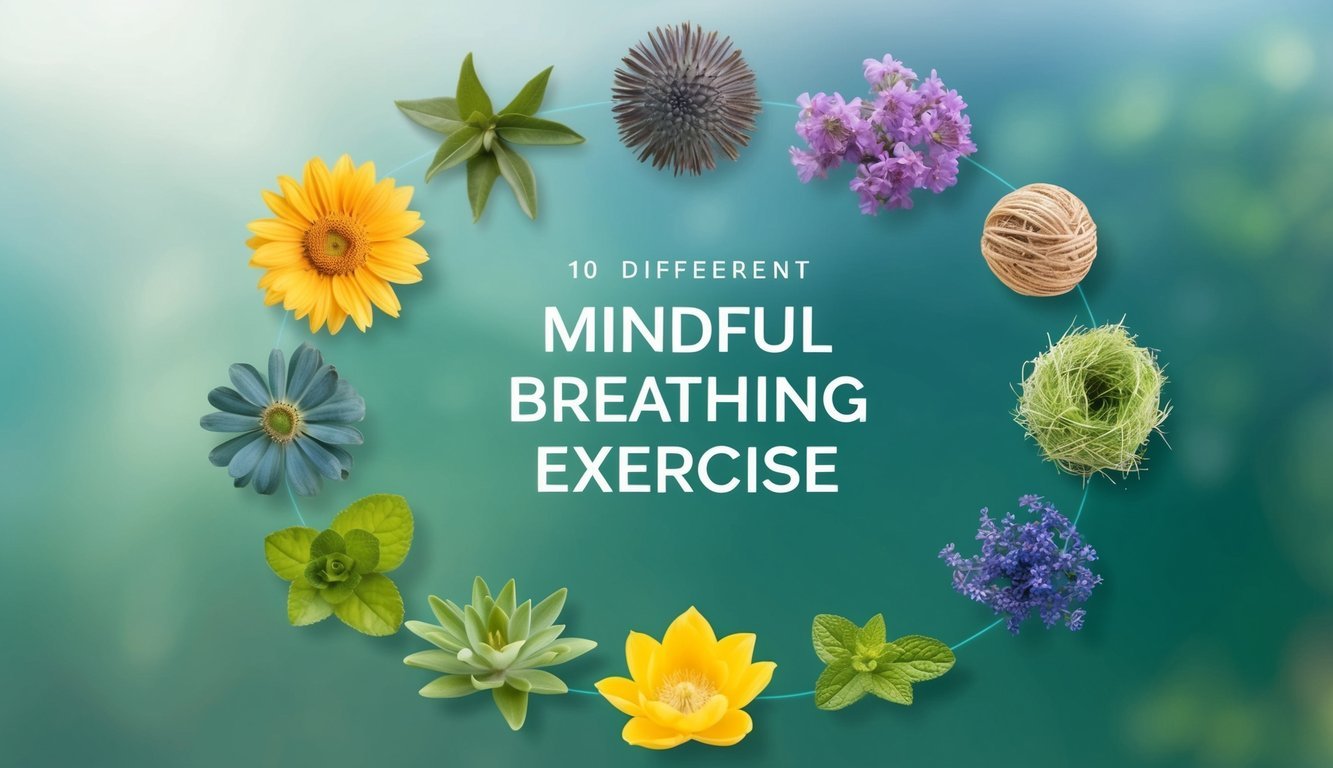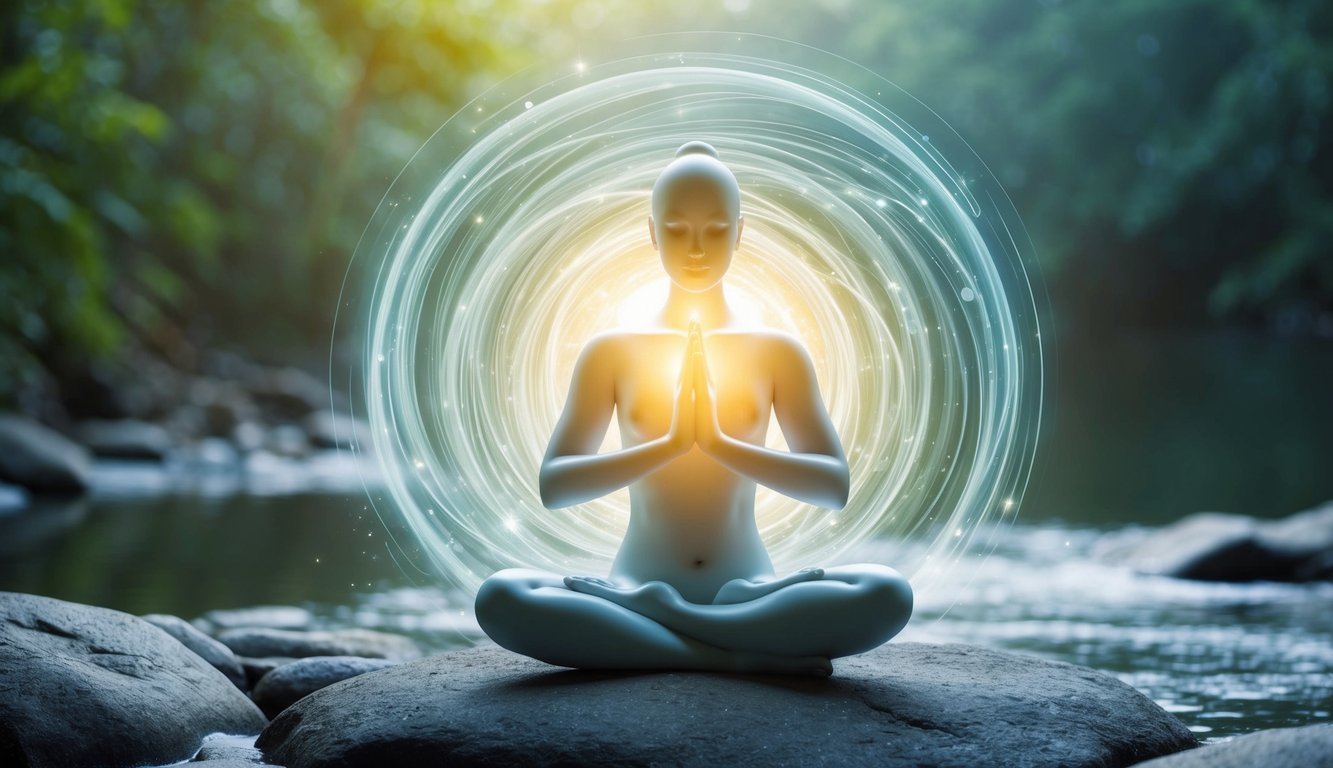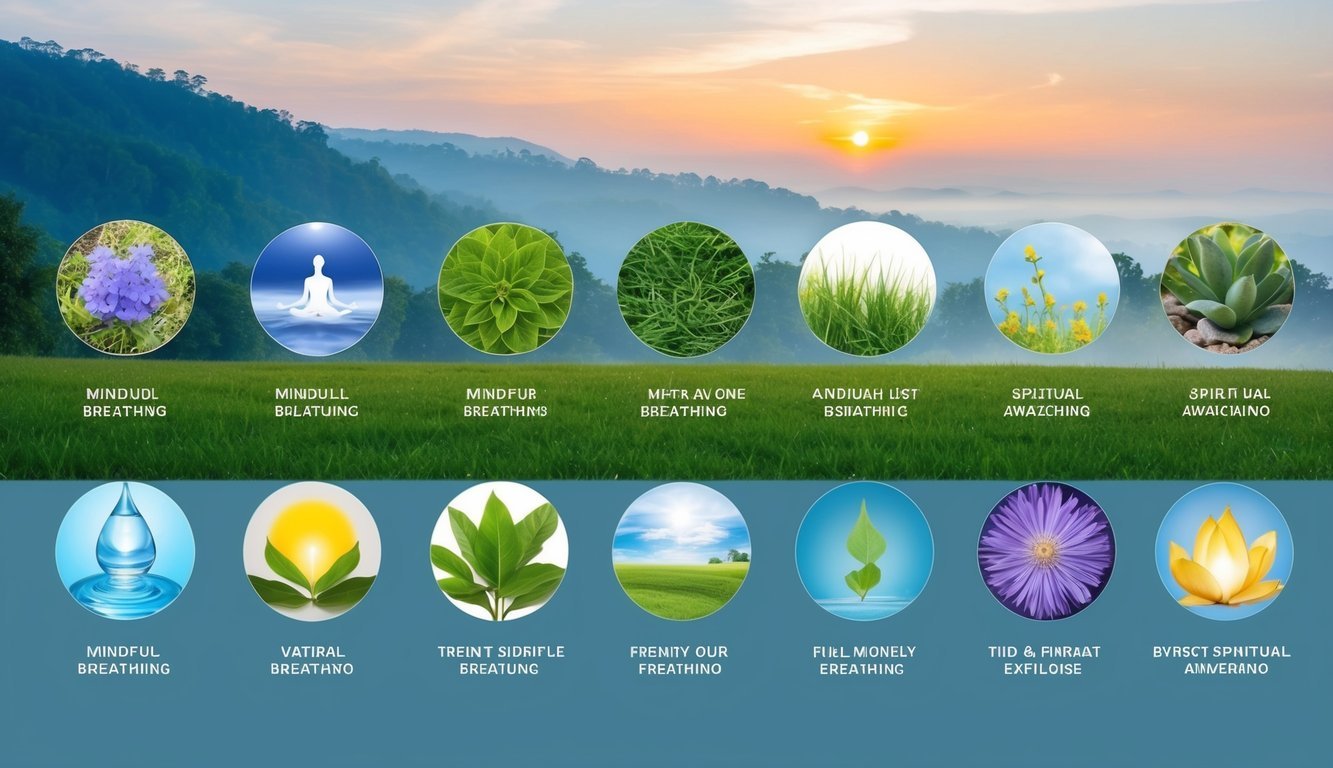PsychNewsDaily Publishers
100 Summit Drive
Burlington, MA, 01803
Telephone: (320) 349-2484
PsychNewsDaily Publishers
100 Summit Drive
Burlington, MA, 01803
Telephone: (320) 349-2484
Mindful breathing techniques cultivate self-awareness and spiritual growth, promoting relaxation and clarity while reducing stress and enhancing overall well-being through focused breath practices.

Mindful breathing exercises have become popular tools for those seeking spiritual awakening and deeper self-awareness. These practices help individuals connect with the present moment and explore their inner selves. They can lead to profound transformations, offering clarity and peace amidst the chaos of daily life.

Many people find that incorporating breathing techniques into their routine aids in reducing stress and enhancing overall well-being. These exercises serve as a bridge to a more mindful existence, encouraging a sense of calm and focus. Embracing these practices can empower individuals on their journey toward spiritual growth and self-discovery.

Inhale peace and exhale stress is a simple but powerful breathing technique. This method helps calm the mind and brings a sense of clarity. It can be done anywhere, making it easy to incorporate into daily life.
To practice, find a quiet spot. Sit or stand comfortably. Close your eyes if it feels right.
Take a deep breath in through the nose for a slow count of four. Visualize breathing in calm and positive energy.
Hold the breath for a moment, then exhale slowly through pursed lips. Focus on letting go of any tension or worry.
Repeat this process several times. Each breath brings a chance to relax and reset. This exercise can be particularly helpful during stressful moments or when feeling overwhelmed. It promotes mindfulness by bringing attention to the breath.
With practice, this technique can help cultivate a peaceful state of mind and enhance overall well-being.

The Still Point Breath is a simple yet powerful technique. It helps quiet the mind and connect with the present moment.
To practice, start by sitting comfortably. Breathe in through the nose, filling the lungs. Then, exhale gently through the mouth.
Focus on creating a sense of calm as you inhale. Hold the breath for a moment before letting it go. This pause, or “still point,” allows for deeper awareness.
As you continue this pattern, you may notice feelings of relaxation. The breath becomes an anchor amid daily stress.
Using this technique regularly can help enhance mindfulness. It guides you toward a more peaceful state and fosters a connection to your inner self.
Encouraging the body to relax, the Still Point Breath can be a step toward spiritual awakening. With consistent practice, you may find greater clarity and presence in your life.

Anapanasati is a breathing practice from Buddhist traditions. It focuses on awareness of breathing in and out. People believe it helps clear the mind and connect with the present moment.
To begin, find a comfortable position. Taking deep breaths helps settle thoughts and emotions. As each breath is noticed, it brings a sense of calmness.
The practice encourages attention to how the body feels with each inhale and exhale. This simple awareness can lead to deeper insights about oneself.
By regularly practicing Anapanasati, individuals often develop more compassion toward themselves and others. It allows them to experience moments of stillness and peace amid life’s chaos.
This method has roots in ancient teachings. It serves as a guide to mindfulness, showing how breath can anchor the mind. Exploring Anapanasati can open doors to greater spiritual understanding.

Connecting with Kundalini energy can be a powerful step in spiritual awakening. Kundalini is often described as a coiled energy located at the base of the spine. When awakened, it can lead to deeper self-awareness and spiritual growth.
Breathing exercises, like pranayama, can help in this process. Techniques such as spinal breathing promote energy flow through the body. Practicing these exercises in a quiet space can create a sense of calm and focus.
Kundalini yoga is another effective way to connect with this energy. It combines breathwork with movement, allowing for a deeper release of stored energy.
Engaging in these practices regularly can awaken dormant energy and enhance spiritual experiences. Many find that a morning routine with these exercises helps set a positive tone for the day.
Consistency is key, as it helps build the connection over time. With patience and dedication, individuals can access the transformative potential of Kundalini energy.

Guided breathing is a peaceful practice that helps connect the mind and body. It encourages relaxation and focus. Many people find it useful for finding balance in their lives.
During guided breathing sessions, one might follow soothing instructions. These instructions can lead to a tranquil state, creating harmony in both body and mind. Simple breath awareness can ground the person in the present moment.
Meditators often start with deep, slow breaths. This helps to calm the mind and reduce stress. As they breathe, they visualize peace and stillness.
Practices may include short sessions of 10 minutes. This duration makes it easy to fit into a busy day. People can listen to recordings or follow along with a guide.
Each session aims to cultivate inner calm and clarity. This fosters a sense of connection and well-being. Guided breathing can be a gentle way to nurture the spirit and enhance life’s joys.

The “Relax and Empty” technique is a simple way to clear the mind. It helps with relaxation and can deepen spiritual awareness.
To start, find a comfortable position. This can be sitting or lying down. It’s important to feel at ease.
Next, close your eyes gently. Take a deep breath in through the nose, filling your lungs. Hold that breath for a moment.
When ready, slowly exhale through the mouth. As you breathe out, imagine letting go of any worries or stress. Picture these feelings drifting away.
Repeat this process several times. With each breath, feel your body becoming lighter.
Focus on being present in the moment. Encourage yourself to let thoughts come and go without holding on to them.
This exercise can prepare the mind for deeper meditation. It promotes a sense of peace and calm, making it beneficial for spiritual growth.
Practice regularly to enjoy its full benefits.

Belly breathing is a simple yet powerful technique. It helps create a sense of calm and inner peace. This exercise focuses on deep inhalations that expand the lower belly.
To practice belly breathing, find a comfortable seated position. Sit up straight and place one hand on your belly.
As you breathe in through your nose, feel your belly rise and expand. When exhaling, slowly release the breath through your mouth. This action helps to relax the body and mind.
Repeating this process can enhance breath awareness. Belly breathing can also help reduce stress and anxiety. It encourages mindfulness and allows thoughts to settle.
This technique is accessible for all. Whether at home or in a quiet space, anyone can give it a try. Practicing belly breathing regularly can cultivate tranquility and serenity in everyday life.

Alternate nostril breathing is a simple exercise that can bring balance and calm. This technique is part of yoga and helps connect the body and mind.
To practice, sit comfortably and use the thumb to close one nostril. Then, inhale deeply through the open nostril, pause, and close it while exhaling through the other side. This pattern is repeated several times.
This exercise may improve focus and reduce anxiety. Many find it helpful in creating a more peaceful state of mind. It promotes relaxation and can help balance the nervous system.
Using alternate nostril breathing regularly can lead to better emotional balance. It’s a great practice to use before meditation or during moments of stress. With just a few minutes, anyone can enjoy its calming effects.

Ujjayi breath, often called the Victorious Breath, is a simple but powerful technique used in yoga and meditation. It involves breathing in and out through the nose while slightly constricting the throat. This creates a soft, ocean-like sound.
Practicing Ujjayi breath can help calm the mind and enhance focus. It allows for a deeper connection to the breath, which can support relaxation during meditation or yoga sessions.
This breathing technique also helps regulate the nervous system. By using Ujjayi breath, you may find it easier to enter a state of mindfulness.
Incorporating this practice into daily routines can lead to improved overall well-being. Many people use Ujjayi breath to better manage stress and promote a sense of peace.

Holotropic breathwork is a powerful practice that can lead to deep self-discovery. It was developed by Stanislav and Christina Grof in the 1970s. This technique combines controlled breathing with music to trigger intense experiences.
During a holotropic session, individuals typically breathe faster and deeper. This change in breath can unlock emotions and memories. Participants often report feeling a sense of connection to their inner selves.
The journey is guided by trained facilitators. They help create a safe environment for exploration. Participants lie down, listen to music, and focus on their breath.
People who engage in holotropic breathwork often find it helps with emotional healing. They may gain insights into their lives and experiences. This technique can lead to personal growth and spiritual awakening.
Holotropic breathwork journeys can be intense, requiring careful preparation and support. Participants should be aware of their feelings and comfort levels during the process. With proper guidance, these journeys can be transformative and enlightening.

Mindful breathing helps individuals focus on their breath and connect with their inner selves. It is a simple yet powerful practice that can lead to a deeper spiritual awakening and enhance overall well-being.
Mindful breathing is the practice of paying close attention to each breath. This involves being aware of the inhale and exhale without judgment. It encourages people to observe their breathing patterns and sensations in the body.
When practicing, individuals often sit comfortably or lie down. They may close their eyes to minimize distractions. The goal is to cultivate a sense of calm and presence. This practice is rooted in mindfulness and has its roots in ancient teachings, such as those from the Buddha.
Engaging in mindful breathing offers several benefits that support spiritual awakening. First, it helps reduce stress and anxiety by calming the nervous system. Lowering tension can create space for deeper self-reflection.
Second, this practice encourages individuals to remain present. Staying in the moment allows for insights and clarity about one’s thoughts and feelings. Over time, regular practice can lead to increased self-awareness.
Additionally, mindful breathing fosters a sense of peace and happiness. It opens the door to a more profound understanding of one’s connection to the universe and can enhance personal growth on a spiritual level.

To practice mindful breathing effectively, you need to create a comfortable environment. The right space helps to enhance focus and relaxation. Here are some important aspects to consider.
A calm environment plays a vital role in mindful breathing. It reduces distractions, making it easier to connect with the breath. Soft lighting and minimal noise can greatly improve the experience.
Tips for a Calm Environment:
Creating a serene atmosphere can lead to deeper breathing and a sense of peace. This foundation is crucial for anyone looking to enhance their mindfulness practice.
Certain tools can help improve the breathwork experience. Simple props can support comfort and encourage focus during the practice.
Useful Tools and Props:
Incorporating these elements can elevate the practice. They assist in maintaining comfort and promote deeper relaxation during breathing exercises.

Mindful breathing can enhance spiritual awareness when practiced consistently. Establishing a routine and applying practical tips can help anyone incorporate this technique into their daily activities.
Creating a regular practice schedule is key. Set aside time each day for mindful breathing. Early mornings or quiet evenings are often ideal times. Starting with just five minutes a day can make a difference.
You might find a comfortable space free from distractions. Then, sit or lie down and focus solely on your breath. Over time, you can gradually increase the duration as you become more comfortable.
Using reminders can also help. Setting alarms or leaving notes can keep mindful breathing at the forefront of your mind. With commitment and a specific routine, these practices become an important part of daily life.
Staying consistent requires patience and creativity. You can use different techniques to keep the practice engaging. For example, mixing breathing exercises with meditation can add variety.
Tracking progress might also be beneficial. Keep a journal to note feelings before and after each session. This awareness can motivate you to continue.
Incorporating mindful breathing during daily activities can help, too. You can take a few moments to breathe deeply while waiting in line or during short breaks at work.
Joining a class or community can provide support and inspiration. Sharing experiences with others can enhance motivation and create a sense of commitment to the practice.

Understanding mindful breathing can help anyone improve their mental and emotional well-being. Here are answers to common questions about using these techniques for stress relief, meditation, and personal growth.
Begin with “Inhale Peace, Exhale Stress.” This exercise focuses on deep breathing where you inhale calmness and exhale tension. Another is the “Still Point Breath,” where you pause between breaths, promoting relaxation and tranquility.
Incorporating breathing techniques can deepen meditation. One method is the “Depth of Anapanasati,” which emphasizes awareness of breath. By focusing on breathing, individuals can quiet their minds and enhance their connection to the present moment.
Breath awareness can reduce anxiety and improve mood. Regular practice can lead to better focus and help manage stress. It also promotes a sense of calm that can positively impact daily activities.
Students can use breathing techniques to remain centered before tests or presentations. Techniques like guided breathing can help calm nerves. By focusing on their breath, students can gain confidence and clarity during stressful situations.
Start by inhaling deeply through the nose for a count of 10. Hold that breath for another count of 10. Finally, exhale slowly through the mouth for a count of 10. Repeat this for several cycles to promote relaxation.
Advanced practices may include “Kundalini Energy Breathing.” This focuses on activating energy within the body through specific breath patterns.
Another method is “Guided Breathing for Mind-Body Harmony,” which combines visualization with breath to foster spiritual connection.